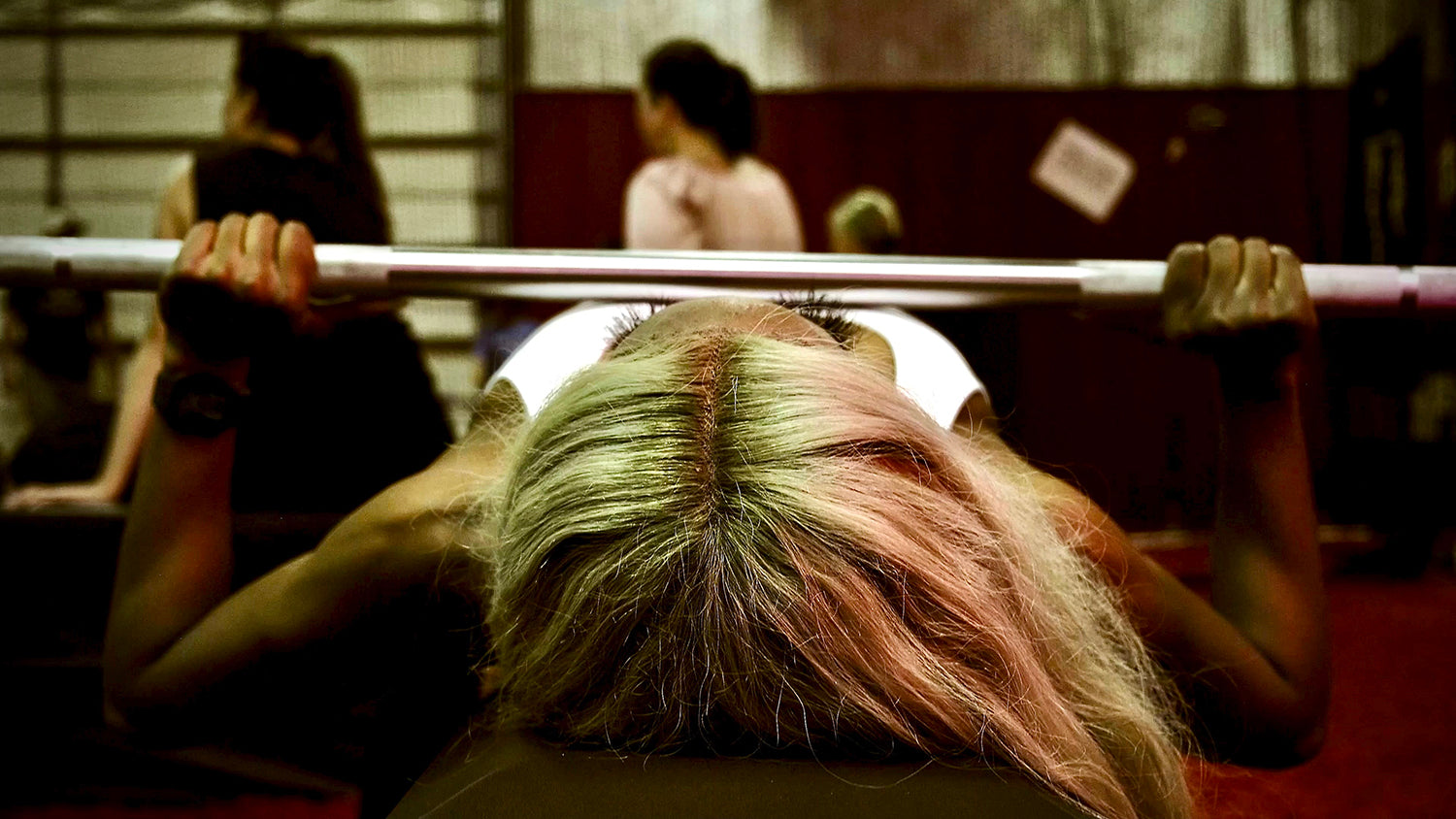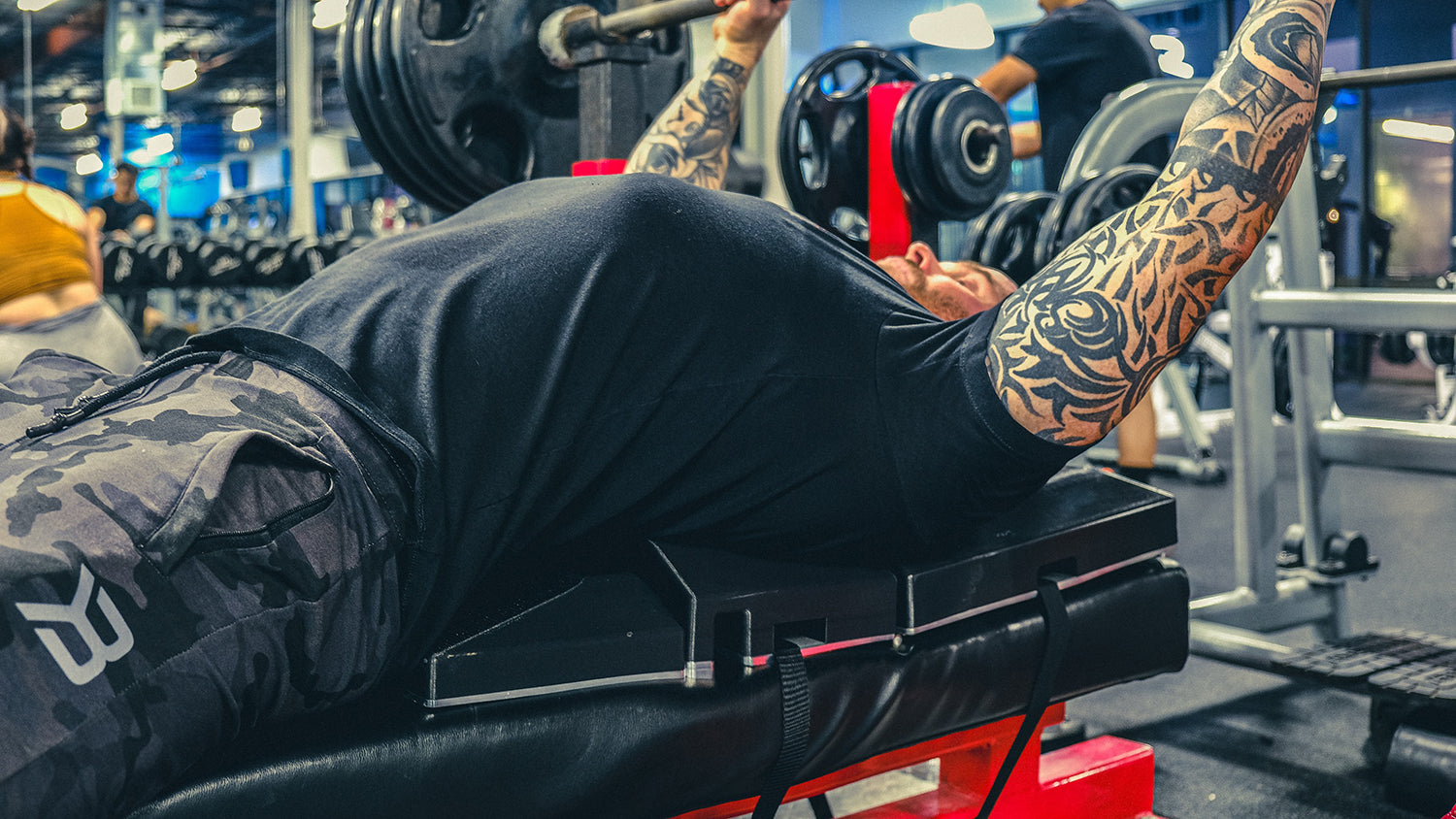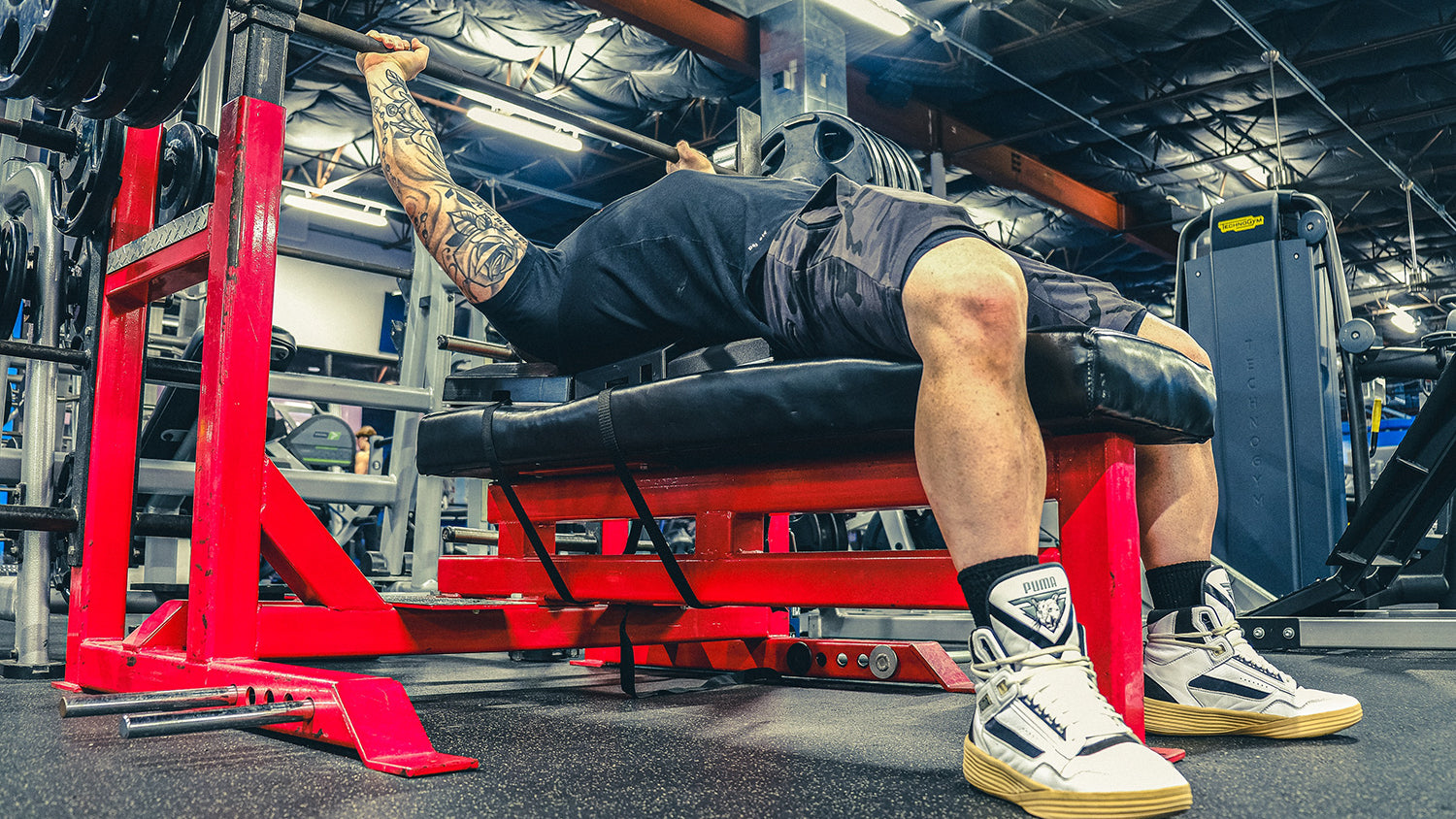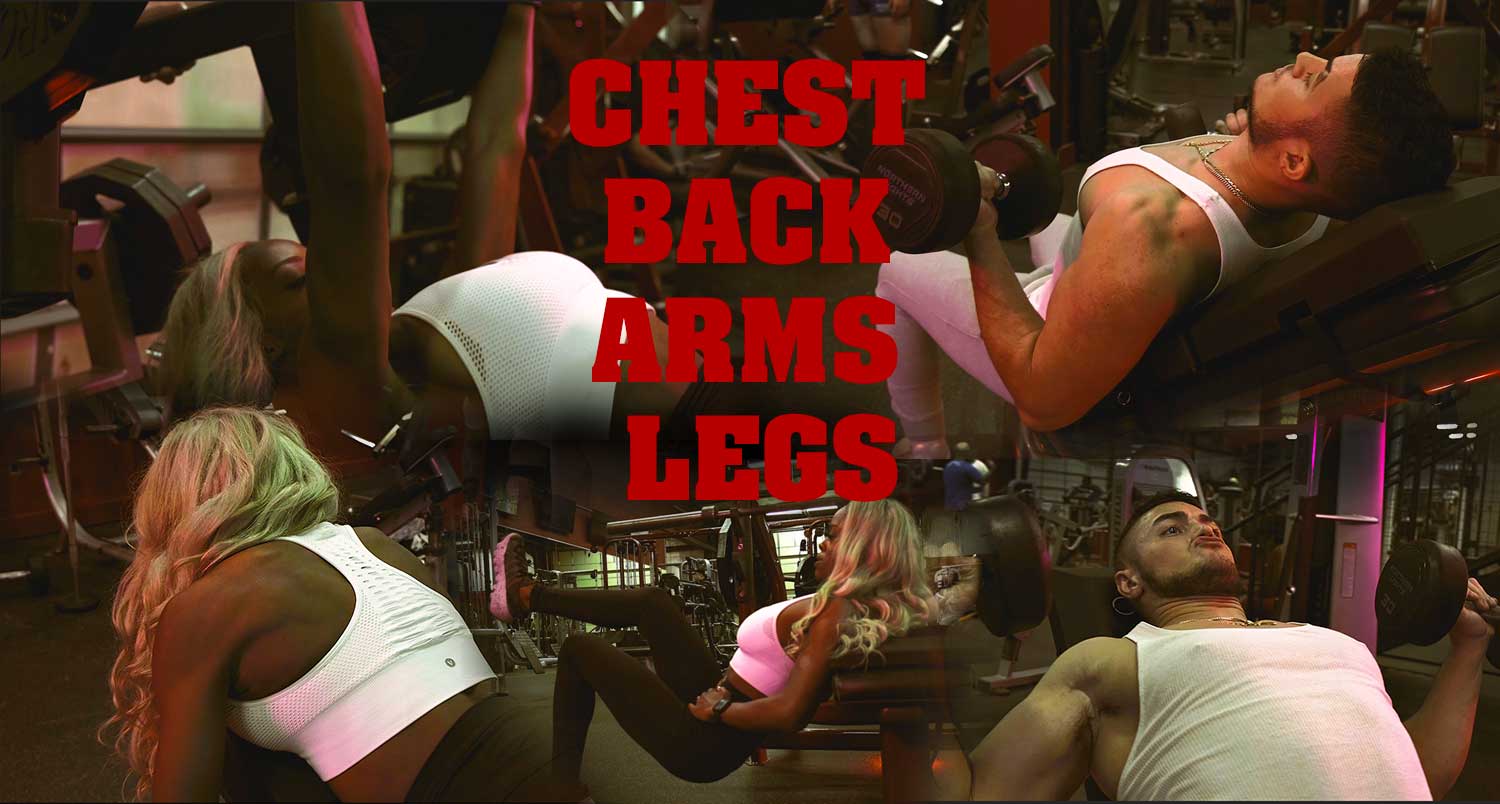The Birth of The Launch Pad
As a certified trainer, former powerlifter, and avid lifter of 20+ years, I have spent more time in gyms than most. Over the years I have seen and heard a lot of things, educated myself through many classes, and I have used just about every piece of exercise equipment you can think of. There is one undeniable truth when it comes to exercise fitness - it is not about what you do, but how you do it. Every exercise begins with set up and stabilization. Setup is the key to ensure the muscle you’re trying to work is in fact the prime mover. Stability is the key to efficient movements and hard contractions.
Here at AMM, we noticed an upward trend with equipment manufacturers producing equipment that’s more complex and more advanced, while the end user’s knowledge and experience level has largely remained the same. This realization prompted us to take a step back, and analyze things from a different perspective, the end user’s perspective. In doing so, we discovered a massive information communication gap between equipment manufacturers and the end users.
THE PROBLEM...
For decades, equipment manufacturers have put their focus on perfecting equipment designs around movement patterns, yet they fail to address proper set up and stabilization - the foundational pillars of any movement pattern. Over time, the information feedback loop problem compounded into biomechanical design flaws in many common pieces of equipment. This has led to injuries, learning curves, and the end users not reaching their full potential.
Take the bench press for example. Even though the bench press is often called the king of upper body exercises, and is the most commonly performed exercise in gyms across the globe, there is a significant percentage of the population that gets less than optimal results from it and its variations. There are several reasons for that. When you bench, you really need to focus on doing it right with every rep of every set. Compared to a move like the deadlift, benching can seem pretty straightforward, but in actuality, it's every bit as complicated, and demands just as much attention to set-up (2). There is a substantial learning curve to proper set up and execution of the bench press. Not everyone has been taught or learned how to set up properly to secure the mechanical advantage to get the most out of flat, incline, and decline presses.
In addition, there are biomechanical design flaws that have been discovered with common pieces of equipment have made it near impossible to get maximum results. What's worse, according to ABA Sports Physiotherapist Ulrik Larsen, the flat bench press is widely reported as being the most common cause of shoulder injuries in the gym. The high levels of injury associated with the flat bench press are primarily caused by the bench itself, and its effect on the movement of the shoulder joint (7).
THE SOLUTION
We attacked this problem head on in bringing you The Launch Pad, the first ergonomic exercise bench pad specifically designed to help the user increase strength, maximize power production, and minimize injury risk.The Launch Pad provides a one of a kind, unique supportive surface to perform anatomically correct push-pull movements to safely and effectively get you the results you deserve. The Launch Pad promotes joint health and proper body positioning. Training with The Launch Pad will enhance your workout experience and provide you a fuller, more natural range of motion, that of which no other piece of equipment can offer.

WHAT SETS THE LAUNCH PAD APART?
Chamfered, Filleted Side Panels: Allow for natural scapula-humeral rhythm, reducing injury risk and joint pain while increasing contractile range of motion for better muscle fiber recruitment.

Generally speaking, the bench press and its variations are performed on a flat surface. ABA Sports Physiotherapist Ulrik Larsen warns that bench pressing on a flat surface can lead to shoulder injuries, as a flat bench surface restricts movement of the scapula. At the shoulder joint, the ‘ball’ is forced to move to the end of its range in the ‘socket’. The scapula is unable to retract on the down phase as the elbow moves past the point of the shoulder causing the humerus to horizontally hyper-extend. While It is unable to protract during the up-phase as the elbow moves to the ceiling causing the humerus to horizontally hyper-flex (6).
Scapular retraction during the bench press is important to maximize safety and performance. This position creates a stable base of support against the bench for the shoulders, decreases anterior forces through the shoulder complex particularly during the eccentric phase, and may improve activation of the pectoralis muscles (Duffey, 2008; Bench Press Analysis (3)). Many argue this is the safest position for the shoulder complex, especially during heavy lifts because it provides added stability for the shoulders (11)
The Launch Pad answers the call for improvement by introducing chamfered, filleted side panels to allow your scapula to fully protract and retract, which is not possible on a traditional bench. The unrestricted movement of your shoulders allows you to keep the tension on the fibers of the target muscle throughout their full contractile range. The result of which removes or significantly reduces your risk for injury, and results in a safer, more effective workout. No more risking injury from lack of support and inhibited shoulder movement. Whatsmore, the increased range of motion compared to that of the elbow and shoulder joints with conventional benches – provides for more muscle fiber recruitment a greater training stimulus.
Adjustable Lumbar Support: This feature supports the lower back, drops the shoulders, and elevates the sternum, optimizing the user's mechanical advantage and ensuring proper form.

To keep your shoulders safe during the Bench Press, you must keep the “ball” in the “socket.” Arching your back, Bonvechio says, helps draw the ball deeper into the socket and allows you to use your upper-back muscles to pull your shoulder blades down and back into a stable position. (1).
Employing an arched back posture improves your stability and lets your chest muscles stretch more for greater muscle activation and strength gains, says Men’s Health Fitness Director BJ Gaddour, C.S.C.S. (4). On the other hand, lying flat rounds your shoulders—increasing your risk for shoulder injury—and puts you in a less-than-ideal position to engage your chest muscles, he says (4). Flat back benching pushes the ball forward in the socket, which causes the elbows to drift behind the bar and the shoulders to shrug into a bad position. This can lead to biceps tendonitis, pec and rotator cuff strains, and other injuries. Think of it like repeatedly squatting with your knees caving in, or letting your back round repeatedly while deadlifting. Eventually, those joints will wear down and get hurt. For your shoulders’ sake, Bonvechio warns, arch your back when you bench press (1)
The Launch Pad’s adjustable lumbar section ensures that the user’s lower back region is completely supported throughout the movement of choice. By supporting your lumbar spine and eliminating space the between your back and the bench, The Launch Pad increases overall stability while placing the chest high and in the perfect position for all forms of dumbbell and barbell pressing. This built-in design feature puts a natural arch into your back and transfers the load onto the pecs and away from the shoulders and triceps. When you train with The Launch Pad, you’re forced to properly align your pectoral girdle by pushing the sternum up while dropping the head and shoulders. In doing so, you place the mechanical advantage on the pecs. When the head and shoulders are below the chest, and the chest is arched, the pecs are isolated and the leverage is placed on the pecs.
Stability and Power Optimization: The Launch Pad allows you to harness the power of leg drive to improve stability and maximize movement output, ensuring full body tension and efficient force transfer.

When performing the bench press most of the body’s stability and a degree of pushing power comes from the legs (5). Strength Coach Mark Ripitoe breaks it down in more detail. The bench press, Mark says, is an upper-body exercise, but since the lifter’s feet are on the floor, everything between the feet and the upper body has the potential to be somewhat involved in the exercise. The lower back and the hips and legs are thus the connection between the ground and the upper back. Strictly speaking, the kinetic chain begins at the bar and ends at the upper-back/bench interface (9). When used correctly, says Mark, the legs drive against the floor, transferring force horizontally along the bench through the hips into the arched back to reinforce the arch and keep the chest in its high position, established when the shoulders were pulled back. The legs and hips thus function as a brace for the chest and shoulders, giving the upper body a connection to the floor and allowing the lower body to contribute to the movement (9).
The Launch Pad allows you to correctly harness the power of leg drive to maximize your output potential. The Launch Pad’s unique ergonomic features increase the surface area of the bench a user’s body is in contact with to completely eliminate the stability and balance issues experienced with traditional bench designs. As you press, your shoulders, spine, and pelvis are supported, through the full range of motion which allows you to handle more weight. This is significant because it allows you to maintain full body tension and ground yourself in an incredibly solid way to maximize power production, minimize energy leaks, and promote proper leg drive to facilitate efficient transfer of force.
Body Position and Joint Centration: The Launch Pad optimizes body positioning, promoting proper form and joint alignment to maximize safety and performance.

The shoulder girdle is one of the most anatomically intimidating regions of the human body, says Dr. Rusin. It’s comprised of four synergistic joints, all required to function with pristine rhythm, mobility, and stability. Each of these four joints must play an active role in either dynamic mobility or stability. (10)
The key is to position your body so that the primary actions of each of these joints can kick in automatically at the most advantageous times, creating a synergistic effect. Achieving proper shoulder packing will maximize length-tension relationships of the surrounding soft tissues. The closed, packed shoulder position occurs naturally when the shoulder is depressed and externally rotated. In this position, muscles ligaments, fascia, and joint capsules increase their tension, thus stabilizing the shoulder joint strongly into the socket. This magic position, as Dr. Rusin describes, is a true representation of joint centration. (10)
Wrist pain, elbow pain, and shoulder pain can all occur on the bench when you have joints out of alignment with big weights and lots of reps-it’s like an overuse injury, but different. Your joints should be stacked on top of each other like a row of poker chips. Wrist over elbow, elbow over shoulder-nice and straight. This allows you to deliver force in a straight line with no leaks and less shear force on all of the involved joints. Less shear equals less wear and tear over time. That adds up to a long career (8).
The Launch Pad’s unique structure optimizes body positioning to shore up proper alignment and joint stacking in the shoulder. All of this adds up to removing pain, injury risks, and allows you to focus on the lift itself. Over time, you will see improvements in your mechanics increased performance (power and strength), and better joint health.
Instructional Advantage: The Launch Pad is an amazing teaching tool for users of any fitness level and a must-have for coaches, athletic trainers, physical therapists, personal trainers, and fitness instructors.
For those new to exercise, learning how to retract the scapulae, contract the abdominals, proper breathing, and controlling the path of the bar is a lot to learn in the initial stages (11). The Launch Pad simplifies this process by putting users in the proper position from the start, making good form easy for beginners to learn and execute. The advanced ergonomic design forces the use of proper sternal angle on every set, for maximum pectoral isolation, stimulation, and development. This helps to break down learning curves and build the users confidence in the gym – allowing anyone regardless of their experience or knowledge level to get results and build muscle.
The Launch Pad provides a unique advantage in an instructional setting by simplifying the process of teaching proper mechanics for a variety of movement patterns. Instructors may train students or clients in proper set up, form, and execution through use of The Launch Pad. It is designed to force a user to assume proper set up and form, which simplifies the teaching process and minimizes injuries or bad habits formed by exercise with improper form while the instructor’s attention is elsewhere. The easiest way to teach someone proper execution quickly is to set them up correctly. When you nail the setup, the exercise is much easier to learn because it feels more natural.
Compatibility, Versatility, And Portability: Compatible with various benches and exercise machines, The Launch Pad is versatile, easy to use, and can be taken anywhere.

We designed The Launch Pad to work on a variety of original equipment benches and exercise machines (plate loaded and weight stack). It is easy to use and may be deployed on machines, standalone benches (stationary and adjustable); Olympic incline, decline, and flat benches, or on the floor. The Launch Pad is extremely versatile. It can be used for variety of chest, back, arms, shoulders, leg, and glute movements, or in isolation (not fastened to a bench or machine), for the execution of auxiliary exercises like floor presses and various abdominal exercises. The utility of The Launch Pad is only limited by your creativity. As soon as you finish training with The Launch Pad, simply remove the straps, fold it up, load it into the special carrying bag, and take it with you. For more ways to use The Launch Pad check out our Training Resources page or YouTube Channel.
Video breakdown of the science and physical design behind The Launch Pad:
REFERENCES LIST
- Bonvechio, T. (2019, February 13). Why You Actually Should Arch Your Back While You Bench Press. Stack. https://www.stack.com/a/why-you-actually-should-arch-your-back-while-you-bench-press/
- Boyce, L., & Boyce, L. (2021, May 26). 5 Hard Truths You Need To Hear About The Bench Press. Bodybuilding.Com. https://www.bodybuilding.com/content/5-hard-truths-you-need-to-hear-about-the-bench-press.html
- Duffey, M. (2008). A Biomechanical Analysis of the Bench Press. A Dissertation in Kinesiology, Pennsylvania State University. 91. Retrieved September 22, 2021, from https://etda.libraries.psu.edu/paper/8894/4230
- Heid, M. (2016, November 17). The Bench Press Myth Most Men Believe—That Could Get You Hurt. Men’s Health. https://www.menshealth.com/fitness/a19532163/bench-press-setup/
- Kazmaier, B. (1981). Bill Kazmaier and the Bench Press. Dynakaz.
- Larsen, U (2008) Bench Press: More Harm than good. Sports Injury Bulletin. 80: 6-8
- Larsen, U. (2020, July). FLAT BENCH PRESS: THE GOOD, THE BAD AND THE SOLUTION. Rehab Trainer. Retrieved September 22, 2021, from https://www.sportecoach.com.au/wp-content/uploads/2020/07/rt-flat-bench-press.pdf
- Murphy, C. J. (2019, March 28). Quick Tip: Bench Press More Right Now. Elite FTS. https://www.elitefts.com/coaching-logs/quick-tip-bench-press-more-right-now/
- Rippetoe, M. (1985). Starting Strength Basic Barbell Training (3rd ed.). The Aasgaard Company.
- Rusin, J. (2021, September 15). 3 Keys to a Big, Injury-Free Bench Press. T NATION. https://www.t-nation.com/training/3-keys-to-a-big-injury-free-bench-press/
- Sutton, B., MA. (2021). Bench Press Targeted Muscles, Grips, and Movement Patterns. NASM. https://blog.nasm.org/biomechanics-of-the-bench-press

